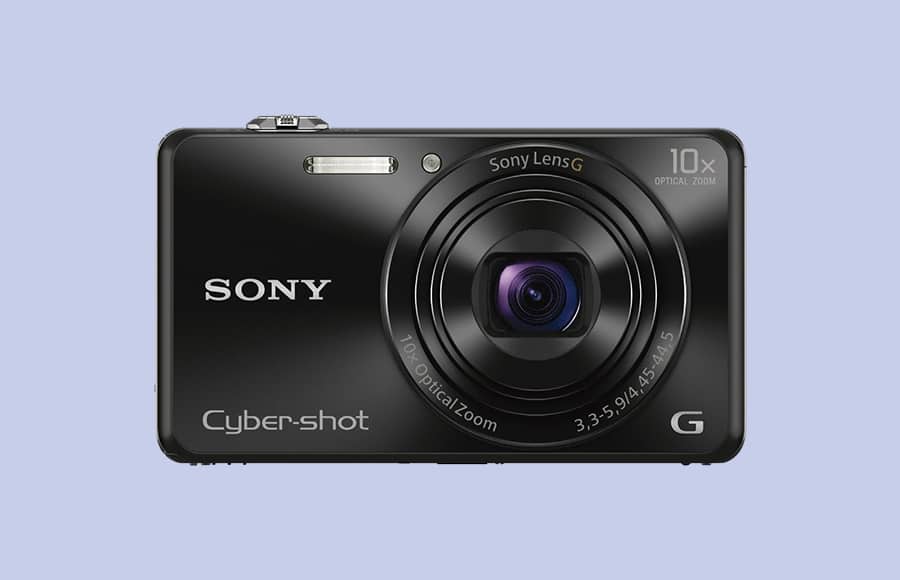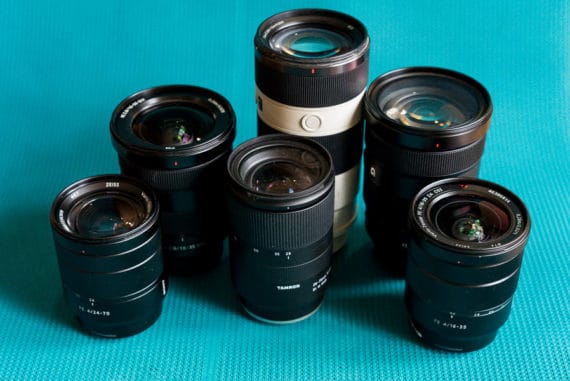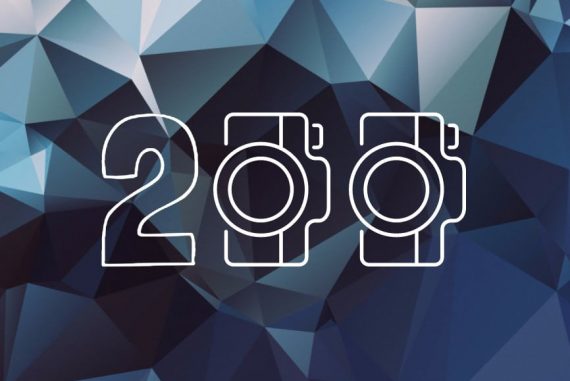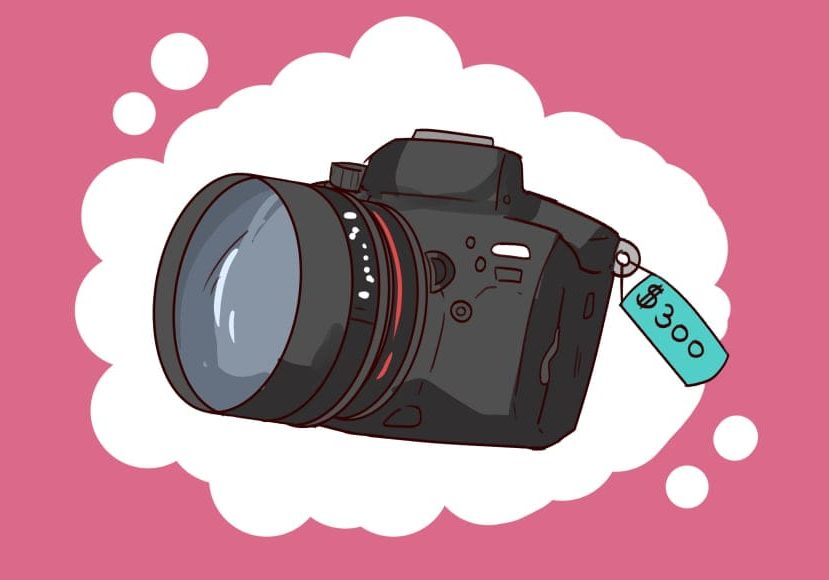
Best Point and Shoot Camera Under $300 (that’s better than your iPhone!)
Yes, you can still get an awesome point and shoot camera for under $300! Find out which models offer the most bang for buck in this handy guide.
If you’re searching for the best point and shoot camera under $300, you’re certainly not the only one.
Smartphone cameras offer many impressive features here in 2024, but that doesn’t mean they’re necessarily better than dedicated cameras.
Sure, maybe you can blur the background with the latest iPhones, or upload every photo to the Cloud with the Google Pixel, but the truth is, your smartphone is far from being the best camera.
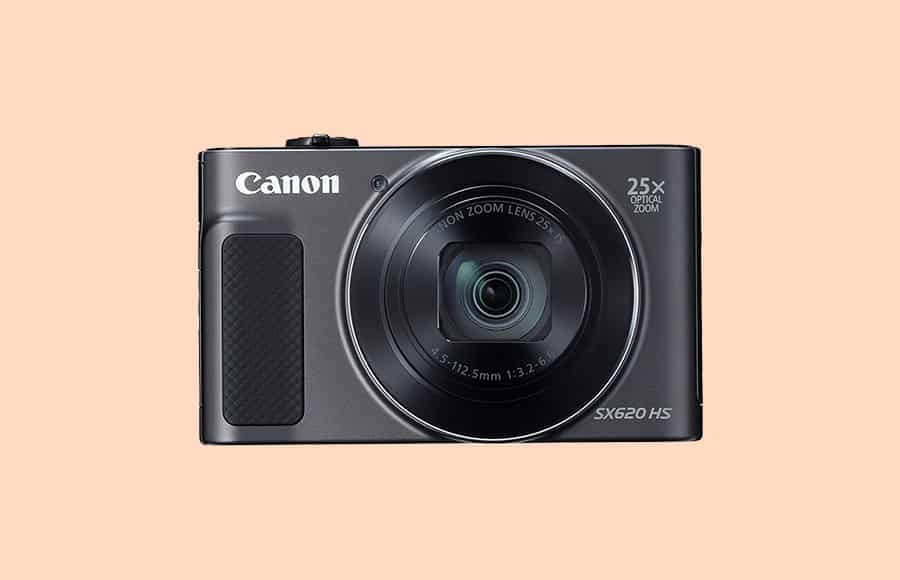
Impressive image quality and autofocus for such a tiny camera at an absolute bargain of a price.
That said, can you really get a decent camera for under 300 bucks?! Well yes, actually – several products we reviewed are actually less than 200 bucks!
Let’s have a look at the best budget point and shoot cameras of the year that you can pick up for less than $300.
Best Point and Shoot Cameras under $300 in 2024
| Image | Product | Features | |
|---|---|---|---|
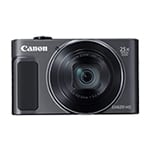 | Canon PowerShot SX620OUR TOP PICK |
| View Price → |
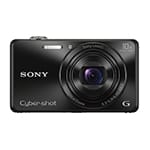 | Sony DSCWX220TOP-RATED |
| View Price → |
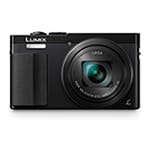 | Panasonic Lumix ZS50GREAT VALUE |
| View Price → |
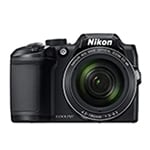 | Nikon Coolpix B500POPULAR CHOICE |
| View Price → |
* Some camera prices may have risen above $300 since this article was written.
1. Canon PowerShot SX620
Megapixels: 20 | Weight: 190g (0.42 lb)
- Powerful 25x Optical Zoom
- Intelligent image stabilization
- Built in WiFi and NFC
- Easy to operate
- Screen doesn’t articulate
- No headphone/microphone port
Canon is known for making a wide range of high quality digital camera gear, and much of it is quite complex. However, they also have offerings that are geared towards those who prefer simplicity, and the PowerShot SX620 is a prime example.
This is the best point and shoot camera under $300 to many enthusiasts.
This camera is as uncomplicated as it gets so, in true point and shoot fashion, you won’t have to spend a lot of time fiddling around to get the shot you’re after.
The PowerShot SX620 features a great 20.1-megapixel sensor (a BSI-CMOS sensor). Despite measuring just 1/2.3″, this sensor gets the job done quite well so it certainly won’t disappoint when it comes to producing high-resolution images.
As far as lenses go, the one fitted on the SX620 is pretty impressive. Its 25mm end is wide enough for you to be able to take in an entire scene and it zooms in all the way to a focal length of 625mm so you can pull distant subjects in quite easily.
Its image stabilisation system also helps keep your images sharp in low light conditions or even at the far end of the lens’ zoom range.
If vlogging is your thing, then the Canon PowerShot SX620 is certainly more than good enough. It shoots in VGA, 720P and full HD so you can choose what will best suit your needs.
One thing to keep in mind, the 3 inch LCD screen of the SX620 doesn’t flip up or articulate.
In terms of value for money, the SX620 won’t burn a hole in your pocket so picking one up for yourself isn’t something to think long and hard about.
The PowerShot SX620 is smaller (but a little thicker) than your average smartphone so it should fit easily into your pocket or purse.
It weighs 190 grams with batteries and media card and measures 3.81 x 2.24 x 1.1″ (97 x 57 x 28 mm).
The PowerShot SX620’s battery life is pretty decent at 295 shots per charge. Plus, it comes with a standalone battery charger that will come in handy if you’re constantly shooting.
Other features of the Canon PowerShot SX620 include a micro HDMI port, a USB port, built-in wi-fi and NFC. Sadly, there are no ports for external microphone or headphones, so you’re going to need to make do with what’s built-in.
At under $300, you may think that there’s not much this camera can do. After all, you get what you pay for, right? Thankfully, this isn’t the case with this compact camera because, in spite of its positioning as a simple, no-frills imaging device, it does its intended job quite well and delivers real bang for the buck.
2. Sony DSCWX220
Megapixels: 18.2| Weight: 121g (0.27lb)
- Ultra-compact body
- Quick to focus
- Full HD video recording
- Performs well in low light
- No touch screen functionality
- Low battery life
Sony is well known for developing high quality, incredibly complex full-frame and mirrorless digital cameras. When it comes to point and shoot cameras, Sony is just as capable of making good things in small packages, often with the best digital features.
The Sony DSCWX220 compact camera makes an ideal point and shoot camera for someone new to photography or moving away from smartphone shooting.
Further to this, a camera of this size and performance would make an ideal travel camera for someone wanting to take great holiday snaps.
The WX220 features a clever little BSI-CMOS sensor that will deliver great image quality even in low light settings.
This camera truly has an ultra-compact body that’s only 22mm thick (or thin) meaning you can slip it into any pocket and hardly notice it is there.
Despite its diminutive size, the WX220 is incredibly easy to hold and manage, with all necessary functions easily accessible.
The overall design of the camera is incredibly neat and simplistic with only a minimum amount of buttons on the rear of the camera. These operate menu, playback functions and video recording and each is well positioned and proportioned.
On the top of the body is a zoom function to operate both the optical and digital zoom as well as a shutter button. As far as terminal ports go, the WX220 has both a mini HDMI port and a Multi USB port for transferring images.
Sony is notorious for a complicated menu system on their larger cameras. Thankfully the menu system on this compact camera is not the same and while far simpler, has a natural flow of navigation and features.
For such a slim camera, the WX220 features quite an amazing lens system that includes Sony’s Optical SteadyShot image stabilization to prevent shake. Further to this, the lens has a 10X Optical Zoom with a range of 25-250mm (35mm equivalent).
You can go even further with the use of the 20X digital zoom to get in super close from quite a distance. The WX220 has a max aperture range of f/3.3 to f/5.9 making this a suitable camera for low light performance.
As the Sony CyberShot does not feature any form of a viewfinder, all image framing and playback relies on the rear screen.
This is a fixed screen with no touch functionality – a feature that users are demanding more and more. The 2.7-inch screen has a good and bright resolution of 460K dots.
Sony is renowned for its quick focusing systems and the WX220 Sony CyberShot camera is no exception to that heritage. It’s able to apply a fast focusing system along with an auto-tracking mode that can grab a subject and hold focus.
Further to this, there is a face detect mode and a smile detect mode that, when activated, will automatically take a shot when someone smiles.
The Sony has an impressive high-speed burst mode shutter speed of 10fps in continuous shooting mode, meaning that you can capture many action shots with a single press of the shutter.
Most point and shoot cameras will have some form of video recording capability with a minimum of HD video. The WX220 is able to record HD 1080 at either 60p or 30p. This is actually quite a respectable video format output from such a little package.
Battery life on the Sony is a little underwhelming as a single fully charged battery will only get you around 210 shots. While it does come bundled with an external battery charger, investing in an additional battery makes sense, especially if you plan to use it for travel.
When it comes to value for money, at just under $200, the WX220 an incredible offering from Sony and a worthwhile investment in one of the best point and shoot cameras.
3. Panasonic Lumix ZS50
Megapixels: 12.1 | Weight: 243g (0.53lb)
- Super-snappy autofocus
- Built-in eye viewfinder
- Leica lens with 30X optical zoom
- 12.1 MP sensor and 10fps burst mode
- Slightly heavier than other compacts
- No articulating screen
In the quest for the best point and shoot camera under $300, the Lumix ZS50 makes the list for very good reasons. In such a compact package, Panasonic have been able to include some large-camera functions and features.
As a result, this is an incredible choice – especially as it’s a compact camera with viewfinder and a Leica lens.
Thanks to the ZS50’s High Sensitivity MOS sensor with large pixel size and the Venus Engine processor, it can shoot in RAW format. This allows for greater levels of details in images that can be edited later on a computer or tablet.
The Lumix is quite a well designed and stylish looking compact camera. While it’s a little heavier than the other compacts on this guide, it’s still incredibly easy to handle and manage.
One of the large-camera features that they’ve added to this small digital camera is the top control dial, which allows easy changes between shooting modes. This prevents you from having to dive into menus to make a change.
The camera also features a customisable control ring on the front that gives you simple manual control over functions such as zoom, focus and even exposure. This is a brilliant feature that gives you greater flexibility in your shooting style.
The Lumix ZS50 features an incredible Leica lens with an impressive 30X optical zoom. This lens has a focal range of 24mm-720mm (35mm equivalent) meaning you can capture the action from a long way away.
Imagine being on a safari and being able to track and photograph a herd of elephants in the distance.
What’s more, the camera features a hybrid optical image stabilization system. This allows for the horizon line to be automatically aligned and for 5-axis stabilization to minimise camera and lens shake especially when zoomed out.
The lens aperture range of f/3.3 – f/6.4 provides the opportunity to manage the depth of field and low light performance. It also has the ability to shoot macro-like images from as close as 3cm.
As we’ve discovered so far in this guide, smaller compact cameras in this price range rarely feature an electronic viewfinder or EVF. With the ZS50, it’s neatly mounted on the rear of the camera and has a 0.20″ LVF (Live View Finder) with a resolution of 1,166K dots.
Having the option of shooting from the rear LCD or the viewfinder again provides a huge amount of flexibility. It also makes this camera feel like much more than a standard point and shoot.
The LCD screen is a fixed 3.0″ TFT Screen LCD display with 1,040K dots of resolution. Even in brighter conditions, you’re still able to work from such a screen.
A further large-camera feature included with the ZS50 is focus peaking. Focus peaking provides the image on the LCD screen with areas in focus highlighted. This way you can use the manual focus ring to finely adjust focus at an intricate level.
In addition to this, the focusing system is quick and also able to track fast-moving subjects. To complete this level of performance is the ability to shoot a high-speed burst of 10fps in continuous shooting mode.
The Lumix ZS50 is also capable of shooting full HD 1080 video up to 60fps. Being able to shoot full HD video (1080p full HD video) makes this a perfect camera for recording your next holiday adventure or family gathering – good quality photos and videos from the same unit.
Without a doubt, the Lumix ZS50 is one of the best point and shoot cameras available for under $300. They’ve managed to pack so many mature camera features and functions into such a small body.
This pocketable and highly capable camera will make the perfect travel partner, allowing you to capture all your precious memories in style. It really is an amazing point and shoot camera that still falls into this affordable price range.
4. Nikon Coolpix B500
Megapixels: 16 | Weight: 542g (1.19lb)
- 16-Megapixel sensor
- 40x optical zoom lens
- Bluetooth, WiFi & NFC Connectivity
- Full HD 1080p video recording at 30 fps
- No OVF or EVF
- Larger and heavier body
Our final camera in this guide has taken a completely different design approach to the standard boxy point and shoot digital camera. The Nixon Coolpix B500 is a 16 MP digital camera which takes the form of a small DSLR body and by no means could be called compact.
It’s also no lightweight coming in at around the same weight of many entry-level DSLRs and mirrorless cameras. However, it does not feature an optical (OVF) or electronic viewfinder (EVF) like those cameras do.
Nikon has been in the camera development business for decades and they are a well-respected brand as a result. Their ability to produce digital cameras that capture great image quality is obvious and the Coolpix B500 is no exception.
The camera features a very large and deep hand grip making it incredibly comfortable to shoot with. Control dials and button placements are ergonomically designed to ensure you can access all you need comfortably.
The B500 features a rather large fixed lens with a 40X optical zoom lens range of 22.5-900mm (based on a 35mm focal length equivalent). That is a staggering amount of reach that even DSLR lenses rarely match – from wide-angle lens right up to super-telephoto territory.
Even more impressive, the camera also features Nikon’s 80X Dynamic Fine Zoom. It’s hard to comprehend that kind of optical zoom range unless you experience it.
The lens has an aperture range of f/3 to f/6.5 meaning that it’s still possible to get great low light performance and subject separation at close quarters.
As mentioned, the Nikon B500 does not feature an electronic or optical viewfinder despite its form of a DSLR camera. Instead, you have the big 3-inch TFT LCD screen with 921K dots of resolution.
A tilting screen is included to provide more dynamic shooting angles and styles.
When it comes to autofocus, the Nikon B500 employes a fast focusing system that incorporates face detection. In addition to this, the focusing system offers subject tracking and a Target Finding AF mode for staying focused on speeding subjects.
This kind of feature is amazing for those intending to shoot wildlife or sports where the action is fast.
The camera features a couple of other things worth mentioning and the first is its low light shooting mode. The Multiple Exposure Lighten feature allows the camera to take multiple shots at small intervals and then stitch them together.
With this feature, you can capture amazing light lines, fireworks and even star trails.
To further support low light shooting and operating at such extreme zoom lens lengths, the B500 includes optical image stabilization via the Nikon Lens-Shift VR.
An incredible benefit of shooting with a camera like this is battery performance. You can take approximately 600 shots when using alkaline batteries; if you’re using Lithium batteries you can double that to approximately 1200 shots.
When you consider all of the great features packed into this camera, it’s incredible value at around $250. What’s more, if you cannot see yourself managing a tiny compact camera, this Nikon provides for greater ergonomic comfort.
At the end of the day, it’s easy to see why this camera made the best point and shoot camera list. There’s a lot of tough competition at this price range and the Nikon B500 easily meets the criteria.
Choosing a Point & Shoot Camera Under $300
If you’re looking for a camera that’s better than a smartphone but won’t break the bank, you’re definitely in luck. There are plenty of digital point and shoot cameras that fit the bill.
How do you choose the right one for you?
Firstly, we’d recommend always sticking to a trusted brand so you know you’re getting a quality product. Cheap doesn’t have to mean flimsy.
Secondly, as the name suggests, a point and shoot camera should be super easy to use with excellent auto features and minimal need to mess about with complex settings. All of the models on this list meet that criterion.
Beyond that, think about which features are most essential to you.
Do you prefer a small, compact body that you can slip into your pocket or a heftier one that satisfies your ergonomics concerns?
Are you going to be shooting full HD video or family snaps? Is it a priority to have built-in wi-fi and NFC so you can hustle your content straight to social media? Do you value a slightly better lens or a slightly lower price?
By deciding what your priorities are, you’ll be able to narrow it down and find the best option for you.
But really, it must be said – when it comes to choosing a point and shoot for under $300, any of the options on this list will get you great bang for your buck, and we dare say you won’t be disappointed with your purchase.

Impressive image quality and autofocus for such a tiny camera at an absolute bargain of a price.





